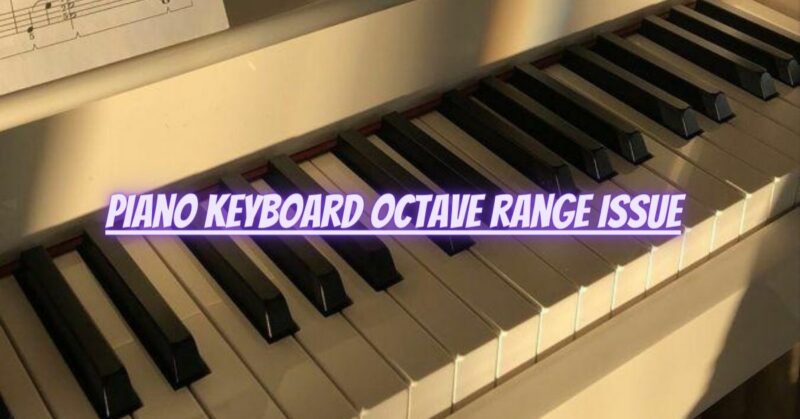Encountering an octave range issue on a piano keyboard can be frustrating for musicians, as it affects the instrument’s ability to produce the correct pitches and may disrupt the playing experience. Octave range issues can manifest in various ways, such as certain octaves not sounding, playing an incorrect octave, or limited range across the keyboard. In this article, we’ll explore common causes of piano keyboard octave range issues and provide practical solutions to troubleshoot and resolve the problem.
1. MIDI Octave Transposition:
If your piano keyboard is connected to external devices or software via MIDI, octave transposition settings may be causing the issue.
Solution:
- Check the MIDI octave transposition settings on your piano keyboard and the connected devices or software.
- Ensure that all MIDI devices are set to the correct octave range for accurate pitch reproduction.
2. Local Control Settings:
In some MIDI-capable keyboards, the Local Control setting determines whether the keyboard’s own sounds are affected by MIDI messages.
Solution:
- Check the Local Control setting on your piano keyboard. If it’s set to “Off,” the keyboard’s own sounds may not respond correctly.
- Set the Local Control to “On” to allow the keyboard’s internal sounds to respond as expected.
3. Split or Dual Mode Configuration:
If your piano keyboard has Split or Dual mode functionality, incorrect configuration of these modes may limit the octave range.
Solution:
- Review the Split or Dual mode settings on your piano keyboard.
- Make sure the keyboard is set up to your desired split points or dual zones without restricting the octave range.
4. Calibration and Firmware Updates:
Occasionally, calibration issues or outdated firmware can affect the octave range accuracy of the piano keyboard.
Solution:
- Check if your piano keyboard has available firmware updates on the manufacturer’s website.
- Install any necessary updates to improve functionality and accuracy.
5. Environmental Factors:
Changes in temperature and humidity levels can affect the materials and components of the piano keyboard, potentially leading to octave range issues.
Solution:
- Keep your piano keyboard in a stable environment with controlled humidity levels to minimize the impact of temperature and moisture changes.
6. Physical Damage or Wear:
Physical damage or wear to internal components may cause octave range problems on the piano keyboard.
Solution:
- Inspect the piano keyboard for any visible signs of physical damage or worn-out components.
- Seek the assistance of a qualified piano technician for repair or replacement if necessary.
Conclusion:
Piano keyboard octave range issues can often be resolved through careful examination of MIDI settings, Local Control, and split or dual mode configurations. Keeping your piano keyboard firmware up to date and providing a stable environment will also help maintain accurate octave range functionality. If the issue persists or seems related to internal problems, seeking professional assistance from a qualified piano technician is advisable. By addressing octave range issues promptly and effectively, you can enjoy playing your piano keyboard with confidence, knowing that it will produce the correct pitches across its entire range.


